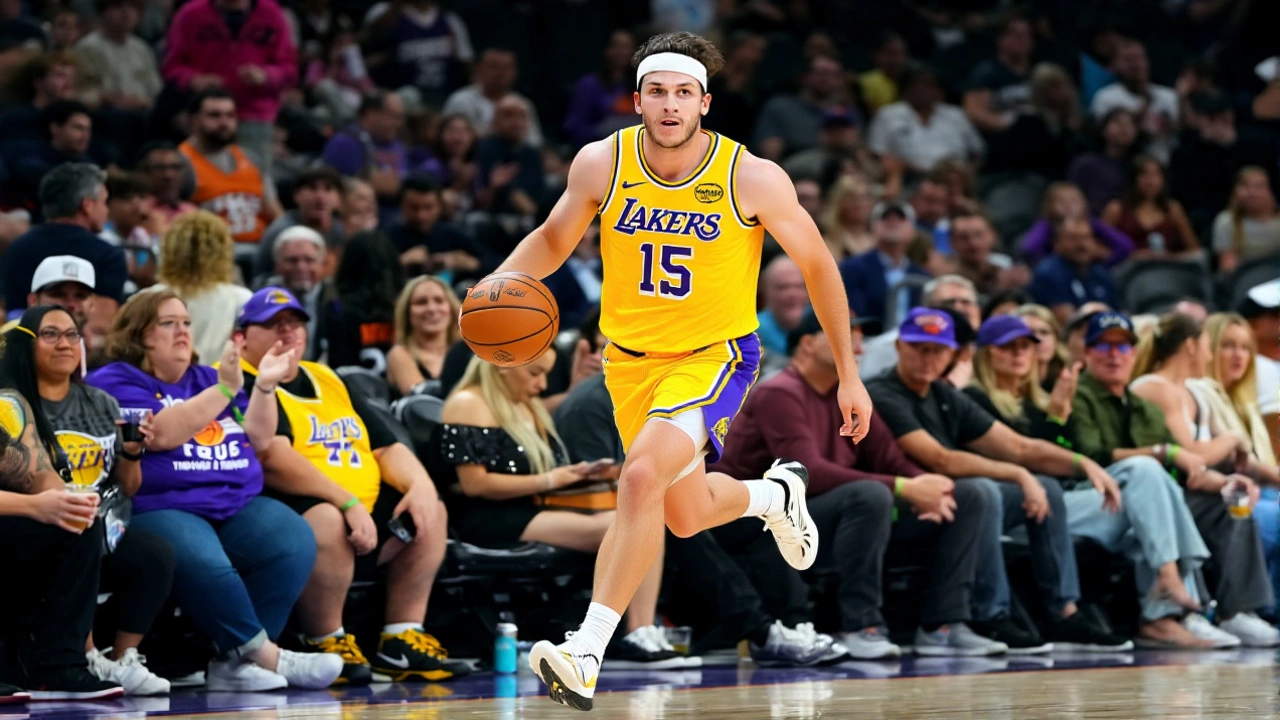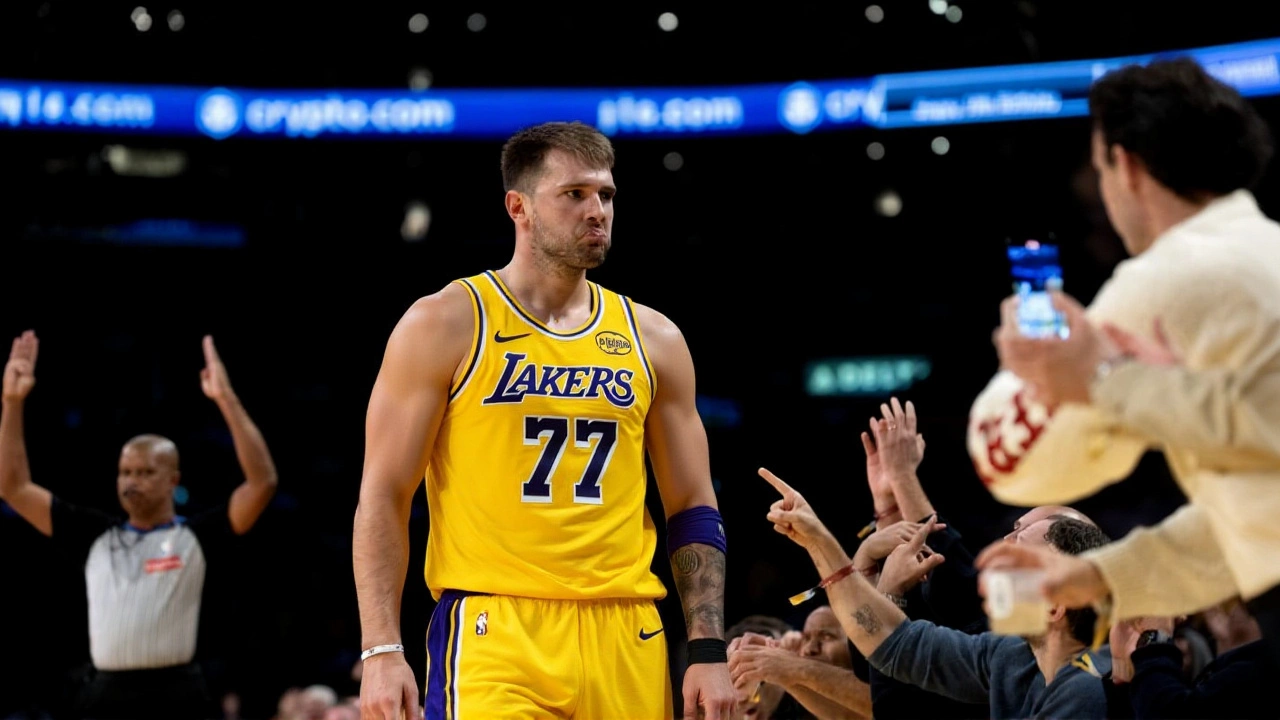With 0.7 seconds left and the Los Angeles Lakers trailing by one, Austin Reaves caught the inbounds pass near the free-throw line, spun past Anthony Edwards, and drained a 12-foot jumper right at the buzzer — sending Crypto.com Arena into pandemonium. The Los Angeles Lakers edged the Minnesota Timberwolves 116-115 on Wednesday, October 29, 2025, completing one of the most improbable comebacks of the young NBA season. Reaves finished with 28 points, six assists, and three steals, his final shot capping a sequence that flipped the script on a game the Timberwolves had dominated for nearly three quarters.
A 20-Point Collapse That Wasn’t Over
The Minnesota Timberwolves looked like they were cruising to a statement win. Up 98-78 with 7:42 left in the third quarter, they were playing with rhythm, precision, and defensive intensity. Rudy Gobert anchored the paint, swatting three shots in the final minutes of the third. Nick Smith Jr., who had started 34 games for the Charlotte Hornets two seasons ago, was hitting mid-range jumpers with ease. But then, something shifted.
The Lakers didn’t make a dramatic lineup change. They didn’t call timeout after timeout. They just kept attacking. Austin Reaves started hitting step-back threes. D’Angelo Russell — who had been quiet all night — found LeBron James for a thunderous alley-oop. By the 3:12 mark of the fourth, the lead was gone. The crowd noise dropped from cheers to stunned silence. "The 20-point lead has completely disappeared," one YouTube commentator noted. "Lakers up by only three."
Final Seconds: Chaos, Clutch, and a Legend in the Making
The last 60 seconds were pure basketball theater. Anthony Edwards drove hard to the rim, drew a foul, and sank both free throws to put Minnesota up 115-114. The Lakers called timeout. The arena held its breath.
Coach Darvin Ham drew up a play for Austin Reaves. Not for LeBron. Not for Anthony Davis — who was nursing a sore knee. For Reaves. The 25-year-old guard, often overlooked in star-studded lineups, has become the Lakers’ secret weapon in close games. "He makes play after play every time he gets an opportunity," said the ESPN broadcast team. On the inbounds, Austin Reaves slipped a screen, caught the ball with his back to the basket, and turned into the lane. Two defenders converged. He elevated — not for a fadeaway, not for a floater — but a clean, high-arcing jumper from 12 feet. Swish. Buzzer. Silence. Then, chaos.
"AR with the winner. AR doing what AR does," the highlights commentator screamed. "All that celebration that the Timberwolves were doing six seconds ago — they’re not doing now."
The Cost of the Comeback
The Timberwolves’ resilience was admirable, but their injuries hurt. Gabe Vincent — the veteran guard who had been starting in place of the injured D’Angelo Russell earlier in the season — was sidelined with an ankle sprain, expected to miss "a couple of weeks," according to post-game commentary. His absence left a gap in ball-handling and perimeter defense that Minnesota never fully filled. Meanwhile, Rudy Gobert played 41 minutes, finishing with 16 points, 14 rebounds, and four blocks — a monster performance that went unrewarded.
For the Lakers, the win improved their record to 3-2, moving them within one game of the Golden State Warriors in the Pacific Division. It also extended their winning streak to two games after a rocky 1-2 start. The Timberwolves, meanwhile, fell to 2-3, extending their losing streak to two and slipping three games behind the Oklahoma City Thunder in the Northwest Division.

What This Means for the West Race
With the Los Angeles Lakers now firmly in the playoff conversation, Reaves’ emergence as a closer could be the difference between a top-four seed and a play-in tournament. His efficiency in clutch situations — 8-for-10 on shots in the final five minutes of games this season — is becoming a defining trait. The Lakers aren’t just surviving without Davis at full strength; they’re adapting.
The Timberwolves, meanwhile, are left wondering how they let a 20-point lead vanish. Their offense looked sharp early, but their late-game execution collapsed under pressure. No player scored in the final 90 seconds besides Edwards. They need more consistency from their bench — particularly from Nick Smith Jr., who showed flashes but wasn’t trusted in crunch time.
What’s Next?
The Lakers host the Phoenix Suns on Friday, October 31, 2025, in a pivotal matchup for playoff positioning. Reaves will likely be the focal point again. The Timberwolves travel to Denver to face the Denver Nuggets on Saturday — a team that’s 3-1 and hungry to assert dominance in the Northwest.
One thing’s clear: in the NBA, momentum is fragile. One shot changes everything. And on Wednesday night, Austin Reaves didn’t just win a game — he announced himself as the kind of player who thrives when the lights are brightest.
Frequently Asked Questions
How did Austin Reaves become the Lakers’ clutch performer?
Reaves has quietly developed into one of the NBA’s most reliable closers over the past two seasons. He’s shot 47% on contested jumpers in the final five minutes of games this year — the highest rate among Lakers rotation players. His ability to create his own shot without relying on screens sets him apart. Unlike stars who need isolation plays, Reaves thrives in motion, using off-ball movement to find open looks — a skill that’s made him invaluable in tight games.
Why didn’t the Timberwolves adjust defensively in the fourth quarter?
Minnesota’s defense relied heavily on switching, but they failed to account for Reaves’ off-ball cuts and quick releases. With Gabe Vincent out, their backup guards lacked the lateral quickness to stay in front of him. Coaches also hesitated to double-team Reaves, fearing open threes from LeBron or Davis. That hesitation cost them — Reaves drew two defenders on his final shot and still made it.
What’s the impact of Gabe Vincent’s injury on the Timberwolves?
Vincent’s absence left a void in ball-handling and defensive intensity. He averaged 11.3 points and 4.1 assists in his first 10 games this season and was Minnesota’s most consistent perimeter defender. Without him, the Timberwolves’ second unit struggled to maintain offensive rhythm. Nick Smith Jr., while talented, is still adjusting to the NBA’s pace and hasn’t yet earned coach Chris Finch’s trust in late-game situations.
How does this win affect the Lakers’ playoff chances?
The Lakers are now 3-2, one game behind the Warriors in the Pacific Division. With a favorable schedule over the next two weeks — including home games against Phoenix and Sacramento — they have a real shot at cracking the top four. Reaves’ emergence as a closer gives them a reliable option beyond LeBron and Davis. In a Western Conference where 50 wins might not be enough, every close win matters.
Is this Reaves’ breakout moment?
It’s more than a breakout — it’s a declaration. Reaves has now hit three game-winning shots in his last 12 appearances. He’s averaging 18.4 points this season, up from 12.1 last year. Scouts are now comparing him to late-career Rajon Rondo for his court vision and timing. If he continues this pace, he could earn his first All-Star nod by February.
What was the significance of the 20-point comeback?
It was the largest comeback by the Lakers since 2020, when they erased a 22-point deficit against the Clippers. Only three teams in NBA history have overcome a 20-point deficit to win in the final 90 seconds. The fact that the Lakers did it without Anthony Davis playing more than 28 minutes — and without a single timeout in the final 4:30 — makes it one of the most impressive in franchise history.

